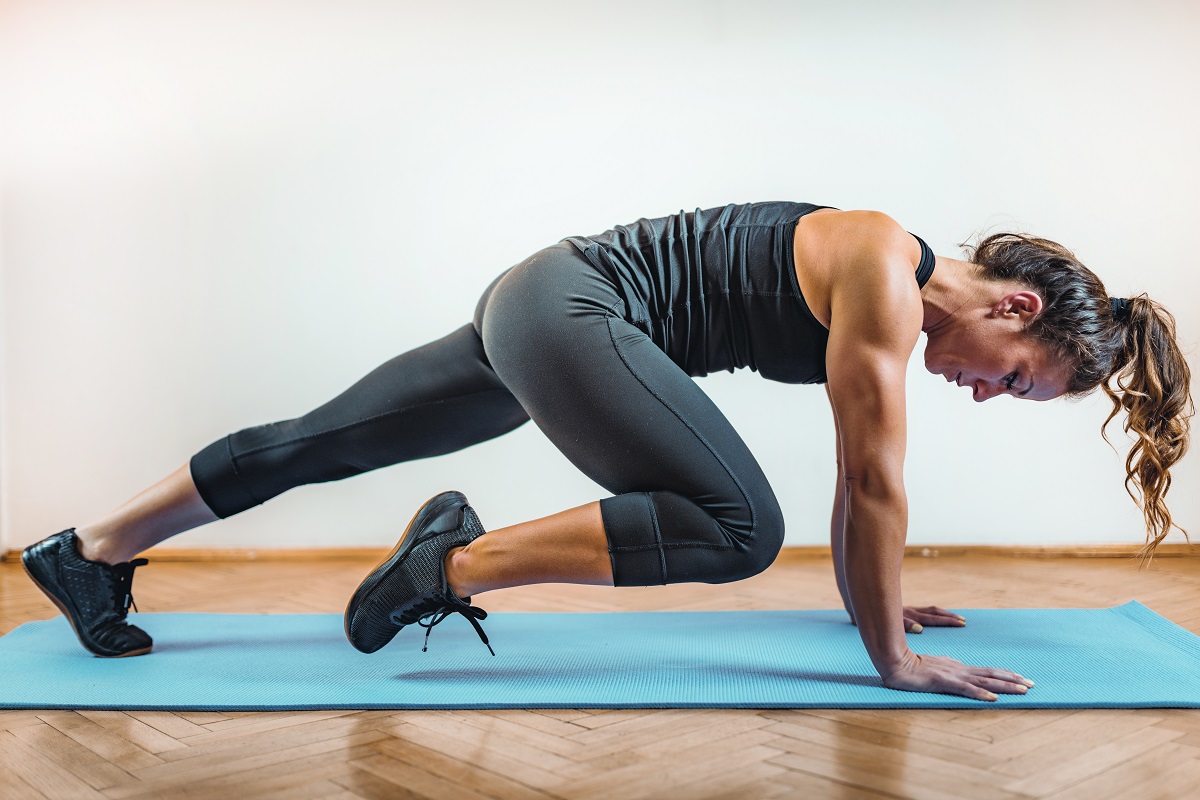HIIT for Heart Health and Weight Loss

However, there is one type of workout that has withstood the test of time: high intensity interval training.
High intensity interval training, also called HIIT, refers to a type of workout that involves quick bursts of highly vigorous activity followed by periods of easier, moderate activity. Each session of intense activity is brief: anywhere from 20 to 90 seconds.
However, during that time, you must push your body to its limits. This can take some getting used to as your body’s natural impulse will be to conserve energy, especially if you are used to endurance training.
Also, remember that “pushing your body to its limits” will mean different things on your first day of HIIT than it will a few months in. Everyone has a different “limit,” and with time, you’ll be able to push yourself further.
In fact, one study indicated that HIIT is the fastest way to push your body to adapt to a higher level of exercise. With some workout programs, it could take weeks or even months for you to start feeling like your body is adapting to the exercise. This study showed that individuals performing HIIT adapted much more quickly and were generally more successful at sticking with their fitness programs than those performing other types of regimens.
Benefits of HIIT
There are a lot of reasons to consider a workout using high intensity intervals. In recent years, fitness experts have discovered numerous benefits to this specific type of workout:
- you can burn a lot of calories quickly
- you keep burning calories long after your workout ends
- HIIT workouts reduce body fat
- they can also build muscle
- your heart rate and blood pressure may improve
- your blood sugar may go down
- your endurance will improve
Let’s take a look at a few of these benefits in more detail.
Efficiency
One of the reasons that many athletes, trainers, and people just trying to lose weight swear by HIIT workouts is that it is far more efficient that many other types of workouts. Because HIIT involves short bursts of extremely vigorous activity, you can exercise for a much shorter amount of time and still get the same results.
Research from The Journal of Physiology indicates that HIIT typically results in the same or better outcomes for health and weight loss than traditional endurance-based workout programs.
Because lack of time is often a problem for people looking to slim down and shape up, HIIT can be the perfect solution. According to one article, performing three 30-minute sessions per week that include 10 minutes or less of high-intensity intervals is enough to see improvements in your aerobic capacity and risk for various health conditions.
In addition to the time factor, HIIT is also efficient and convenient because you can perform the workout anywhere using little or no equipment. This means that if you have little time, can’t afford a gym membership, or are traveling over the holidays, you can still perform a highly effective HIIT workout and stay on track with your fitness goals.
Reduction in Body Fat
According to research conducted the University of New South Wales, overweight and obese individuals who attempted to lose weight using HIIT as their primary workout were highly successful. At the end of the research, the majority of the study participants had lower body fat percentages and waist circumferences than they did at the start of the research.
This is an important finding, as the majority of people who take on new exercise regimens do so because they want to reduce body fat. The findings of this particular study suggest that HIIT workouts specifically target fat stores without resulting in a decrease in muscle composition.
Cardio-vascular Health
Another common reason that people take on new exercise routines is to improve their cardio-vascular health. Luckily for these individuals, HIIT programs have been shown to have positive effects on heart health and blood pressure. When you push your body to its limits, you force your body to take in more oxygen than normal to keep up with the strain of the exercise.
This high level of oxygen consumption has amazing benefits for your cardio-vascular system. In fact, one study showed that patients with coronary artery disease saw significant improvements in their heart health after beginning a HIIT regimen.
In addition, another team of researchers performed an experiment to compare the effects of HIIT and endurance training on vascular functions. The study concluded that participants performing HIIT saw greater enhancements in their vascular systems than those engaging in endurance training, likely because of the increased oxygen intake associated with HIIT.
Insulin Levels
Research has suggested that HIIT can actually improve your insulin levels and make it easier for your body to create energy from food. The study was performed using participants who were typically very sedentary, showing that anyone can benefit from HIIT.
Endurance
If you are already athletic, you may be concerned about replacing your typical workout with HIIT because you are focused on increasing your endurance. However, even athletes have been shown to demonstrate significant improvements using HIIT. According to the research, the improvement in performance could be linked to improved skeletal buffering capacity.
How to Perform HIIT
Remember that when performing HIIT, it is important to push your body to the max during your high intensity sessions. However, rest is also an important factor. Your body needs time to recover if it is going to be able to perform well throughout your workout.
A typically HIIT session should last for 20-45 minutes. A good rule of thumb is to use a 1:2 ratio. This means that for every one minute that you spend performing at a high intensity, you should spend 2 minutes in recovery.

Running up stairs is an example of high intensity training
Any typical cardio exercise can be used for HIIT. You can spend 1 minute sprinting followed by 2 minutes jogging or walking.
You can run up the stairs and then walk back down. You can bike at a high speed for 1 minute and then go slower for 2 minutes.
However, you can also do other types of cardio-focused exercises if you want to mix up your routine or get your workout in at home. Here are some ideas for at-home exercises you can perform (followed by a period of rest) that will get your heart pounding.
- burpees
- plank jacks
- jump squats
- jumping lunges
- butt kicks
- mountain climber
These are just a few possibilities. Anything that pushes your body hard and gets your heart and lungs working can be used for a highly effective HIIT workout.









